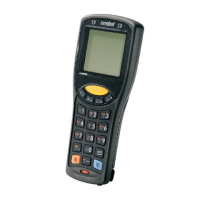Chapter 6 Creating/Loading Hex Images
Introduction
Terminal Configuration Manager (TCM) is an application used to customize flash file system partitions for the
mobile computer. The most common use is to create an application partition hex file that contains the customer's
application. TCM can also be used to load hex files to the flash memory of the mobile computer.
The program resident on the mobile computer that receives the hex file and burns it to the flash memory is called
Initial Program Loader (IPL).
TCM scripts control the customization of partitions. The scripts contain all of the necessary information for building
an image. The script is a list of copy commands specifying the files to copy from the development computer to the
partition.
TCM works with a pair of directory windows, one displaying the script and the other displaying the source files
resident on the development computer. Use standard drag and drop operations to add and delete from the script
window.
The DCP includes scripts used by Zebra to build the standard factory installed Platform and Application partitions
provided on the mobile computer. The standard Platform partition contains drivers while the Application partition
contains demo applications and optional components. The standard TCM scripts can be found in the following
folder: C:\Program Files\Symbol Windows CE SMDK (MC1000)\SymbolPlatforms \MC1000\TCMScripts.
The required processes for building a hex image in TCM include:
• Starting TCM
• Defining script properties
• Creating the script for the hex image
• Building the image
• Sending the hex image
• Creating a splash screen
• Flash storage.
NOTE Before creating a script to build a hex image, identify the files required (system files, drivers, applications,
etc.) and locate the files’ source directories to make the script building process easier.

